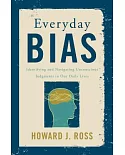The science is unequivocal: stabilizing climate change implies bringing net carbon emissions to zero. And this must be done by 2100 if we are to keep climate change anywhere near the 2oC
warming that world leaders have set as the maximum acceptable limit. Decarbonizing Development looks at what it would take to decarbonize the world economy by 2100 in a way that is compatible
with countries’ broader development goals. It argues that the following are needed: • Act early with an eye on the end-goal. How best to achieve a given reduction in emissions in 2030 depends
on whether this is the final target or a step towards zero net emissions. If the latter, early action needs to be a mix of cheap quick fixes and costlier long-term measures to promote
technology development, investment in long-lived infrastructure, and changes in how cities are built. Fortunately, many options with high potential offer immediate local co-benefits, so that
early action need not represent a trade-off with short term development goals. • Go beyond prices with a policy package that triggers changes in investment patterns, technologies and behaviors.
Carbon pricing is necessary for an efficient transition toward decarbonization. It is an efficient way to raise revenue, which can be used to support poverty reduction or reduce other taxes.
But carbon pricing alone cannot solve the climate change problem, given the many market failures and behavioral biases that distort economies. Policy-makers also need to adopt measures that
trigger the required changes in investment patterns, behaviors, and technologies – and if carbon pricing is temporarily impossible, use these measures as a substitute. • Mind the political
economy and smooth the transition for those who stand to be most affected. Reforms live or die based on the political economy: a climate policy package must be attractive to a majority of
voters and avoid impacts that appear unfair or are concentrated on a region, sector or community. Thus, reforms have to smooth the transition for those who stand to be affected – by protecting
vulnerable people but also sometimes compensating powerful lobbies. Getting rid of environmentally harmful subsidies and pricing carbon provides additional resources with which to improve
equity, protect those affected, and, when needed, appease opponents.





















